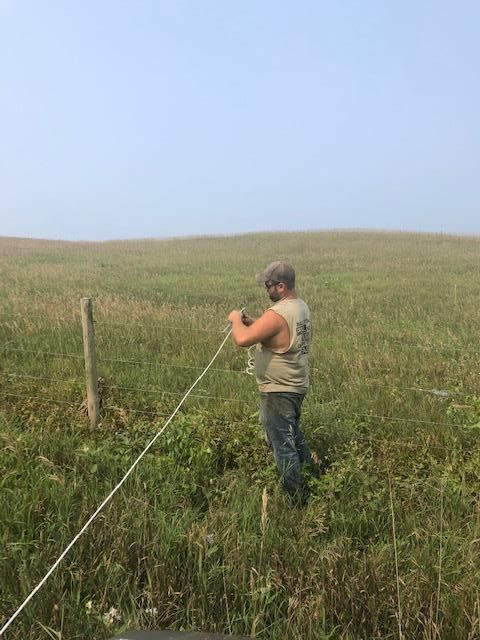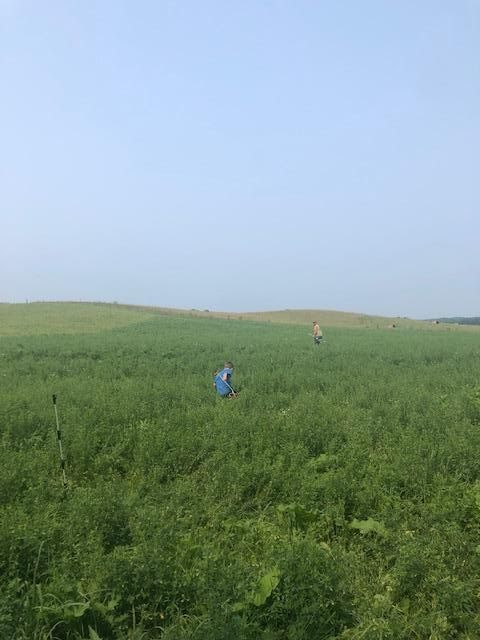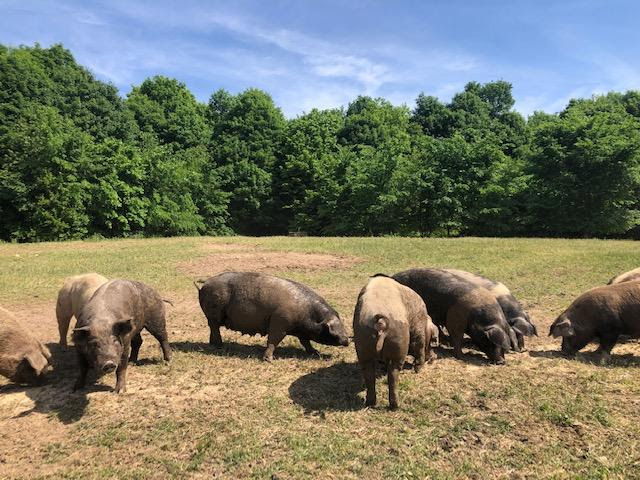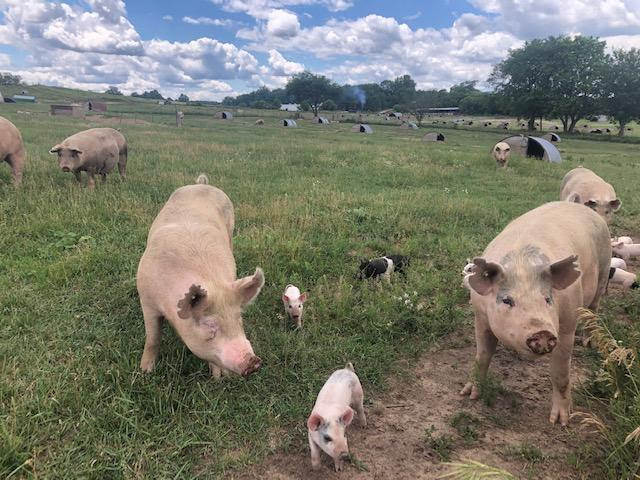Rotational Grazing
posted on
July 30, 2021
We’ve introduced our cattle to a new pasture this year that was normally used to harvest hay for the winter months. In order to concentrate the cattle’s efforts of grazing and fertilizing the land with their manure, we segment off small paddocks of the field using a rope electric fence.
The installation and movement of this fence is fairly simple which is helpful when managing time for labor. It also allows our kids to help with the task of moving the cattle once they eat the grass to an adequate length.
Nick prefers to keep the length around 5-6 inches tall. Grass too long quickly loses nutritional value and moisture. Grass too short is vulnerable to the weather and takes more time to regrow than grass that has been trimmed.
This concept is very similar to how you may keep your lawn: not too short, but not too long. The only difference is we manage it in smaller sections, and move fencing and cattle when the job is complete, instead of parking the riding mower.



We also utilize our pigs to manage our grasslands; however, they require a different pasture-plan. Currently our fencing is not conducive for rotating pigs and cattle within the same pastures. Each year we invest money into new cattle fence that will work for both species. However, It may take another 2-5 years to transition all our fencing depending on finances.
In the meantime, our pigs are moved to promote the best environment for their different stages of life on the grass; as opposed to the cattle, which are moved to promote the growth of their sole food source.
We like to keep the pigs that are breeding in areas that are very cool and comfortable. These fields either have a barn structure, or a nice tree line to provide comfort and shade for reproductive behaviors.

Once they are bred, the best pasture for pregnant pigs is lush, green grass that is well-manicured without being too wet or too dry. Baby pigs thrive on a clean, fresh pasture.

Finally, Our market pigs live their best life in the forest. They are the most active and cause the most damage to a grassland; therefore, the woodlands are the perfect safe-haven for their activities.
The woods are hearty and stand up to the test of the pigs’ natural instincts to root things up and fulfill their constant energy and curiosity.

It’s important as a farmer to think about how everything works together for your particular farm: the land, the animal, and yourself. You live through dreams of what could be while practicing the reality of now.
It’s important as a consumer, to understand your farmer through this process. Each farmer may work towards a different purpose, with different terrain, a unique climate, and differing financial needs that fuel their decision-making and plans.
There is no better pathway to understanding than to visit, follow, read, and support through conversations, vote with your food dollars while providing encouragement and feedback along the way.



